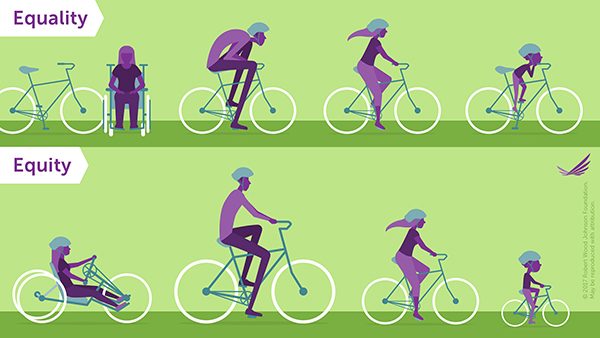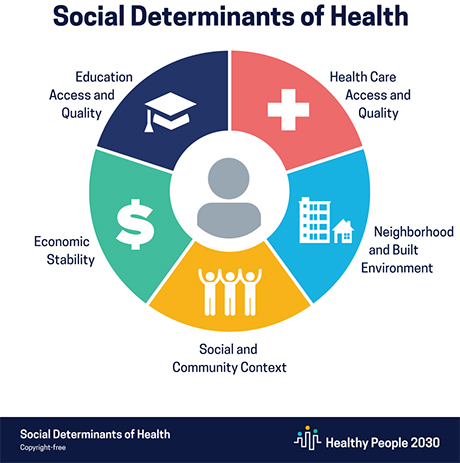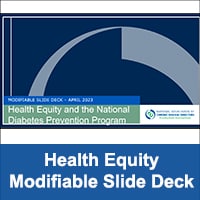Health Equity → Health Equity and the National DPP → Defining Health Equity
Defining Health Equity
Understanding what is meant by health equity and related terms is critical to its promotion. Finding consensus around definitions can bridge differences and promote productive dialogue around important issues. This page will define health equity, health disparities, social determinants of health (SDOH), and health-related social needs (HRSN).
- Health Equity and Health Disparities
- SDOH and HRSN
- Understanding SDOH and HRSN is Critical to Promoting Health Equity
- Resources
Health Equity and Health Disparities
Health Equity
CDC defines health equity as the state in which everyone has a fair and just opportunity to attain their highest level of health.1 Health equity implies that everyone has a fair opportunity to achieve their full health potential and achieving health equity would mean the removal of “avoidable, unfair, or remediable differences among groups of people, whether those groups are defined socially, economically, demographically, or geographically or by other means of stratification.”2
Health Disparities
The U.S. Department of Health and Human Services defines a health disparity as “a particular type of health difference that is closely linked with social, economic, and/or environmental disadvantage. Health disparities adversely affect groups of people who have systematically experienced greater obstacles to health based on their: racial or ethnic group; religion; socioeconomic status; sex; age; mental health; cognitive, sensory, or physical disability; sexual orientation or gender identity; geographic location; or other characteristics historically linked to discrimination or exclusion.”3

© 2017 Robert Wood Johnson Foundation
SDOH and HRSN
Social Determinants of Health (SDOH)
Social determinants of health (SDOH) are the conditions in the environments where people are born, live, learn, work, play, worship, and age that affect a wide range of health, functioning, and quality of life outcomes and risks.4 Disparities in these conditions contribute to health inequities.
The U.S. Department of Health and Human Services’ (HHS) Healthy People 2030 categorizes the social determinants of health into five groups:
- Economic Stability
- Education Access and Quality
- Health Care Access and Quality
- Neighborhood and Built Environment
- Social and Community Context
Consider looking into each of the five groups above to learn more about all the factors that can affect peoples’ lives, and to learn about CDC’s objectives in each area.
Health-Related Social Needs (HRSN)
While everyone has socially determined factors of health, some populations and individuals may have health-related social needs (HRSN) stemming from these factors. While SDOH are broader social conditions, HRSN are more immediate individual or family needs impacted by those conditions.5 They include housing insecurity, food insecurity, or lack of reliable transportation that can lead to decreased health and a lower quality of life.

Understanding SDOH and HRSN is Critical to Promoting Health Equity

Source: Institute for Clinical Systems Improvement, Going Beyond Clinical Walls; Solving Complex Problems (October 2014)
Resources
- NACDD has a Health Equity page that includes NACDD Action on Health Equity and other health equity resources, including a section specific to diabetes.
- CDC provides an extensive webpage on SDOH including research, data, and other SDOH tools.
- CDC also provides a guide to ten essential public health services and how they can include addressing SDOH inequities.
- The Health Equity Modifiable Slide Deck was created to support conversations between state health departments and partners working to promote the National DPP lifestyle change program. The slide deck’s content supports the potential for the National DPP lifestyle change program to help achieve health equity goals, reduce health disparities, and overcome health and economic social needs. This slide deck can be used as part of strategic conversations to obtain buy-in, create alliances, and initiate collaborations to improve health equity.
References for sources cited on this page can be viewed here.










